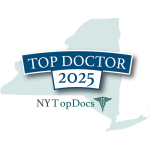

The Fraxel® DUAL Laser system has the unique advantage of two treatment modes/wave lengths in one Laser which is an improvement from the original single mode Fraxel® Laser system. Fraxel® DUAL laser can treat a broad range of skin damage, such as age spots, sun spots, wrinkles and other signs of aging. The laser treats only a fraction of the skin tissue at a time, leaving the surrounding tissue intact, which promotes rapid healing. This stimulates your body’s own natural healing process replacing the old and damaged cells with fresh, glowing, healthy skin.
Fraxel DUAL Laser Modes/Wave Lengths:
This non-surgical procedure will be tailored to your desired outcome. You can enjoy the full benefits of both/or one mode/wave length. The Fraxel® DUAL Laser treats only a fraction of tissue at a time, leaving the surrounding tissue untouched to enable rapid healing. This stimulates your body's own natural healing process, replacing the old and damaged cells with fresh, glowing, healthy skin. The result is more youthful, radiant skin with minimal down time. Any area of the body can be treated: face, chest, neck, back and hands. Fraxel Laser protects against skin cancer while making your skin look young again.
New research has shown that, in addition to repairing your skin, Fraxel can actually help you defend against skin cancer while making your skin look young again. Fraxel triggers the healing process, producing collagen which will revitalize your skin with a smoother, younger look, but it also makes use of the older cells of your skin to produce substances that are protective against skin cancer.
Depending on the size, location and condition of the area to be treated, a Fraxel treatment can take approximately 20 minutes.
Dr. Robinson is improving skin cancer treatments with less invasive treatments. No scarring, no bleeding, functional & cosmetic results are superior to cold steel excision & MOHS. Patients on anticoagulant therapy do not have to stop their medication before treatment, therefore not increasing their risk for stroke and/or heart attack, quick healing, & no risk of post-operative complications! This is especially helpful with Infirm or older patients, great for professionals who can't afford downtime or a scar.
Using non-ablative fractional laser therapy offers a Gentle Approach to Treating Pre-Cancerous Growths and Overall Healthier Skin.
Skin cancer is the most prevalent cancer in the United States. More than 3 million Americans are diagnosed with non-melanoma skin cancer(s), such as basal cell & squamous cell carcinoma each year. These two types of cancers are collectively known as keratinocyte carcinoma or (KC).
In individuals with a history of a prior KC, the risk of developing subsequent KC remains a significant concern.
In our study using non-ablative fractional laser therapy, including 4 sessions spaced at 2-4 week intervals, w/ follow-up assessments, 1-3 months after the final treatment session 60% had greater reduction of the development of KC and had improved overall health of sun-damaged skin. There was also a lower recurrence rate of MOHS. Lowering the rate of infection directly related to lack of having an open wound.
Non-ablative fractional laser therapy has already demonstrated remarkable success with minimal downtime & discomfort as a gentle yet effective treatment of actinic keratosis (AK), the most common type of pre-cancerous skin conditions. Other benefits to using non-ablative fractional laser therapy is it's ability @ ameliorating photo damage, utilizing precise photothermolysis to stimulate collagen and elastin production, promote dermal wound healing & decreasing and improving hyperpigmentation, telangiectasias, skin tone, skin laxity, and tactile roughness. Now we can add treatment of certain skin cancers to the list.
Most patients describe an increased sensation of heat during the treatment. Prior to the procedure we will apply a topical anesthetic cream, which helps minimize any discomfort during treatment.
The number of treatments needed depends on your goals and constraints. Typically, patients require a minimum of 2 treatments @ 4 week intervals.
Fraxel lasers can treat women and men of all ages and skin colors. Any area of the body can be treated: face, arms, legs, back, abdomen and buttocks. Fraxel treatments also work on delicate skin areas like the neck, chest and hands.
Your skin will feel softer, look brighter and improve skin tone. Other benefits of treatment include: reducing the appearance of acne scaring, treatment of actinic keratosis, reduction of fine lines and wrinkles, smoother, fresher, younger looking skin, improved tone and texture, erase unwanted brown spots, age spots & melasma.
There are both immediate and progressive results. Soon after the treatment, the surface of your skin will feel softer, look brighter and show improved tone & texture. The next 3 to 6 months will bring additional improvement as the deeper layers of the skin continue to heal. Results can last for several years depending on your age and skin condition.
You will experience redness and/or swelling resembling a bad sunburn after the procedure that diminishes over the next 3-4 days. The evening after your treatment, your face will feel hot, applying cool compresses will provide comfort. We recommend using the prescribed ointments after treatment during the healing process. Usually by days 4-5 you will begin to peel, revealing smoother, younger looking skin. Total downtime is usually 5-7 days. Dr. Robinson will work with you to determine the best option within your lifestyle and work constraints.
HydraFacial MD is a godsend one week post Fraxel to speed up the shedding process that re-surfacing procedures inevitably induce while deeply hydrating the skin. Once healing is done, it is important to stay out of the sun as much as possible in order to maintain the results. The use of sunscreens, Retinol and skin brightening products will help keep hyperpigmentation at bay.
Fraxel Laser compliments other cosmetic procedures, such as dermal fillers, Botox, TempSure Envi & HydraFacial MD.
Our Cosmetic Consultation Reimbursement policy is offered to all patients. Come discuss your needs and goals with Dr. Robinson and the office visit cost will be applied to future costs for the discussed procedure. *Procedure must be completed within 30 days of your consult visit.




Control of acne is an ongoing process given that acne can be a chronic problem. All acne treatments work to reduce current acne pimples but work better at preventing new acne breakouts. Acne treatments usually take 6 to 12 weeks to become fully effective. During that time existing blemishes may take time to heal and you may experience temporary worsening before improvement. Chemical peels and laser treatments can speed the time to improvement and often help clear pigmentation and scars. . Your treatment will vary according to the type of acne i.e. acne cysts, pustules, whiteheads or blackheads.
Occasionally, an acne-like rash can be due to another cause such as make-up or lotions, or from oral medication. It is important to help Dr. Robinson by providing an updated history of what you are using on your skin or taking internally. Many non-prescription acne lotions and creams help mild cases of acne. However, many will also make your skin dry. Follow instructions carefully.
Dr. Robinson will evaluate your ance and suggest the best treatment regimes considering your age, sex, and the type of acne you have.
Dr. Robinson can treat acne scars by a variety of methods. Skin resurfacing with laser, dermabrasion, chemical peels, or electrosurgery can flatten depressed scars. Soft tissue elevation with subcision or filling agents such as Radiesse, Restyene, Juvederm, Cosmoderm or Cosmoplast can elevate scars. Scar revision with microexcision and punch grafting can correct pitted scars. Combinations of these surgical treatments can make a noticeable difference in appearance.

